#Simone LeRoux
Text
Dark Tales of Whimsy
Dark Tales of Whimsy is a new short fiction collection from Endless Ink Books. I’ve previously read and enjoyed Endless Ink titles, including a 2020 short story collection, Earth’s Final Chapter. Dark Tales of Whimsy follows the pattern of 4 short stories around a theme, this time with twists on fairy tales and myths.
Reimaginings can be a rough genre, because it’s so saturated with generations…

View On WordPress
2 notes
·
View notes
Text

cpressunitedfc2 injured girlies😔🫶
#merritt mathias#simone charley#christen press#sydney leroux#angel city fc#angel city vs portland thorns
88 notes
·
View notes
Text
Natalie herself and probably most of the Yellowjackets thought she became the Antler Queen when she let Javi die or perhaps when Lottie announced her coronation, but Natalie actually became the leader the moment she turned around and told Shauna she had to look her in the eye while she did it. In this essay I will...

#yellowjackets#natalie scatorccio#sophie thatcher#sophie nelisse#shauna shipman#juliette lewis#melanie lynskey#lottie matthews#courtney eaton#simone kessell#javi martinez#luciano leroux
125 notes
·
View notes
Text
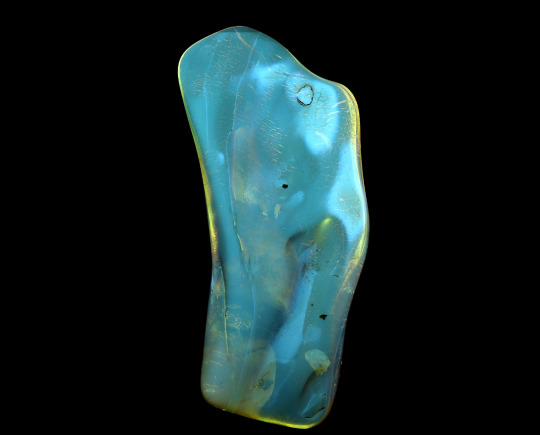
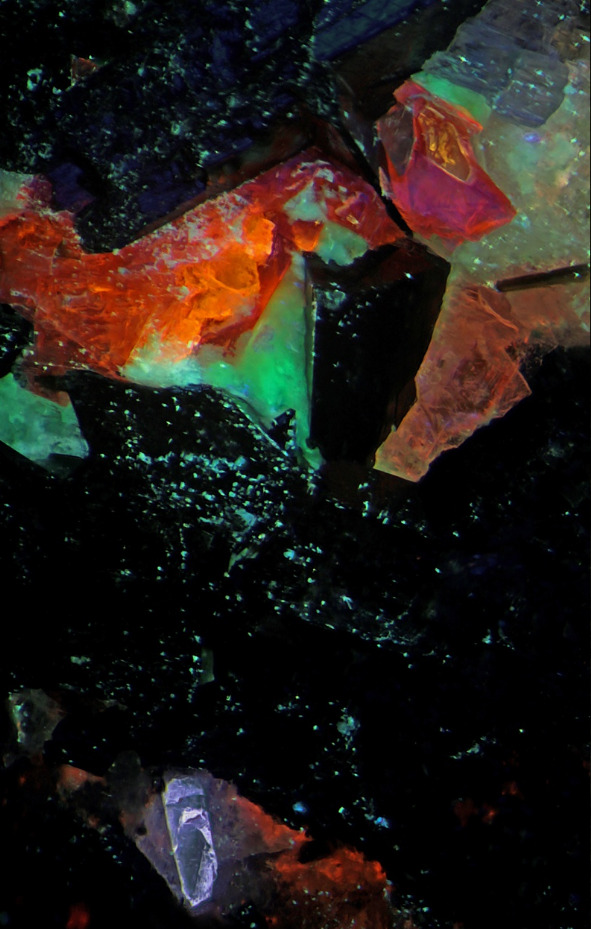
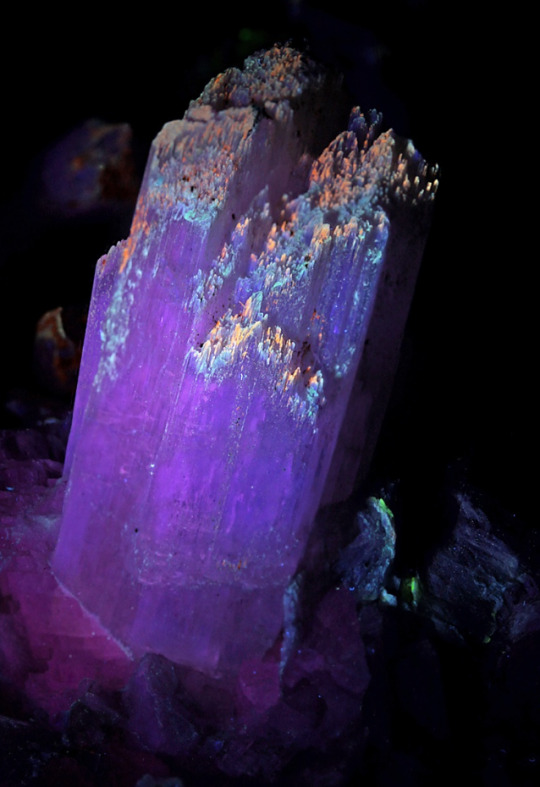



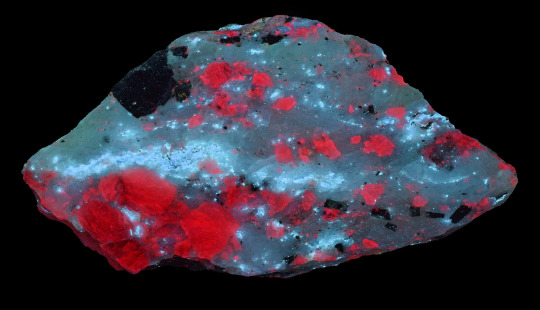





Amber, Lithuania, photo by Simone Conti
Thermonatrite, Villiaumite, fluorapatite, Poudrette Quarry, Canada, photo by Modris Baum
Pectolite, Calcite, Poudrette Quarry, Canada, photo by Modris Baum
Albite, Poudrette Quarry, Canada, photo by Modris Baum
Hackmanite, Calcite, Poudrette Quarry, Canada, photo by Modris Baum
Catapleiite, Calcite, Albite, Gonnardite, Poudrette Quarry, Canada, photo by Modris Baum
Zektzerite, Microcline, Neptunite, Dara-i-Pioz Massif, Tajikistan, photo by Christopher Clemens
Calcite, Graymont Quarry, Canada, photo by Frederic Messier Leroux
Opal, Aragonite, Kopasz Hill Andesite Quarry, Hungary, photo by Simone Conti
Fluorite, Calcite, Trout Brook, Canada, photo by Harold Moritz
Ellingsenite, Villaumite, Aris Quarries, Nambia, photo by Vic Cloete
Fluorapophyllite, Pectolite, Amphibole Supergroup, Poudrette Quarry, Canada, photo by Modris Baum
#mineral#geology#photography#amber#simone conti#thermonatrite#villiaumite#fluorapatite#modris baum#pectolite#calcite#albite#hackmanite#catapleiite#gonnardite#zektzerite#microcline#neptunite#christopher clemens#frederic messier leroux#opal#aragonite#fluorite#harold moritz#ellingsenite#vic cloete#fluorapophyllite#amphibole supergroup
45 notes
·
View notes
Text
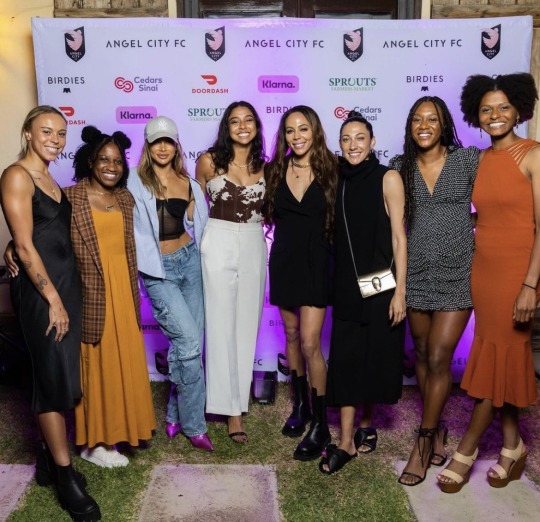
#christen press#maddison hammond#ma vignola#simone charley#sarah gorden#sydney leroux#jasmyne spencer#allyson swaby#acfc#angels
168 notes
·
View notes
Text

The ACFC graphic for today’s Juneteenth game is straight up 🔥
#Christen Press#Syd Leroux#Sarah Gorden#alyssa thompson#madison hammond#Jas Spencer#MA Vignola#simone charley#Angel City Juneteenth
18 notes
·
View notes
Text

weareangelcity Black and Proud 🖤
Today is our Juneteenth celebration match!
#acfc#angel city fc#sarah gorden#simone charley#sydney leroux#maddison hammond#christen press#ma vignola#alyssa thompson#jasmyne spencer#nwsl
5 notes
·
View notes
Text

Ethan Freeman weekend link roundup!
A huge thanks to Dannii at @behindthemirrorofmusic for organizing and to everyone who came out to celebrate his 65th birthday with us! It was so fun doing a collaboration like this.
Featured content
Full video: Ethan Freeman, Anne Gorner & Nikolaj Brucker (Essen 2006, his last performance as the Phantom)
Full video: Ethan Freeman, Julie Washington & Simon Bowman (London 1995)
Ethan Freeman at 65: Dannii's brand-new, hour-long documentary about Ethan and his career, featuring lots of interview footage and performance clips
Special birthday episode of Behind the Mirror of Music podcast: Features many rare recordings!
Albums
With You (solo album): Apple Music | Spotify | YouTube
The Phantom of the Opera & Love Never Dies (Highlights) feat. Claire Moore and John Barrowman: Apple Music | Spotify
Other fun stuff
The Ethan Freeman Appreciation YouTube channel
@ethanfreemanappreciation here on Tumblr
Ethan reads excerpts from The Phantom of the Opera by Gaston Leroux
"'Til I Hear You Sing" (live)
Where to find Ethan
Instagram: @ethan_daniel_freemanactor and @art_ethandanielfreeman
Facebook
61 notes
·
View notes
Text
24 books in 2024
It is 2024, and I am here yet again with my bookish hopes and dreams!
I did this challenge last year (available here), and in 2022 (available here), and I'm STOKED to do it again this year! As is my way, I have been planning and revising this list for some time. My Goodreads overfloweth with ideas.
As always, if you have book recs, please send them my way! And, if you're participating in the challenge this year, I'd love to see your lists!
Without further ado, I gladly present to you my 24 in '24 book list:
Sci-Fi and Just for Fun :)
1) Randomize by Andy Weir (read April 2024)
2) Next by Michael Crichton (read May 2024)
3) Do Androids Dream of Electric Sheep? by Philip K. Dick (read April 2024)
4) With a Little Luck by Marissa Meyer (read February 2024)
Environmental Science/Ecology/Books Relevant to my Studies
5) Operating Manual for Spaceship Earth by Buckminster Fuller (read April 2024)
6) Must Love Trees: An Unconventional Guide by Tobin Mitnick
7) Scientifically Historica: How the World’s Great Science Books Chart the History of Knowledge by Brian Clegg
8) Letters to a Young Scientist by Edward O. Wilson
Reading Around the World
9) The Eighth Continent: Life, Death and Discovery in the Lost World of Madagascar by Peter Tyson (Madagascar)
10) Everything is Wonderful: Memories of a Collective Farm in Estonia by Sigrid Rausing (Estonia)
11) Willoughbyland: England’s Lost Colony by Matthew Parker (Suriname)
12) A General Theory of Oblivion by José Eduardo Agualusa and Daniel Hahn (Translator) (Angola)
Rory Gilmore Reading Challenge/Classics
13) The Picture of Dorian Gray by Oscar Wilde (read April 2024)
14) The Second Sex by Simone De Beauvoir, H.M. Parables (Translator and Editor), and Deirdre Bair (Introduction)
15) Gidget by Frederick Kohner
16) Bel Canto by Ann Patchett
Recommended by Friends
17) Meditations by Marcus Aurelius (recommended by @hedonism-tattoo and many, many others)
18) Howl’s Moving Castle by Diane Wynne Jones (also recommended by many people now. @permanentreverie posted about it recently tho, and that was what really made me decide to include it on this list!) (read April 2024)
19) Tress of the Emerald Sea by Brandon Sanderson (recommended by @daydreaming-optimist ) (read April 2024)
20) The Phantom of the Opera by Gaston Leroux (recommended by @kaillakit) (read May 2024)
Eco-Psychology
21) Ecopsychology by Lester R. Brown
22) Against Purity: Living Ethically in Compromised Times by Alexis Shotwell (read April 2024)
23) Radical Ecopsychology: Psychology in the Service of Life by Andy Fisher and David Abram (foreword)
24) Sight and Sensibility: the Ecopsychology of Perception by Laura Sewall
Bonus
25) Bride by Ali Hazelwood (read February 2024)
26) Open Heart Surgery by Johanna Leo (read March 2024)
27) A Short History of the World in 50 Books by Daniel Smith
28) Candy Hearts by Tommy Siegel (read February 2024)
No pressure tagging: @daydreaming-optimist @kaillakit @permanentreverie @noa-the-physicist @silhouette-of-sarah @captaindelilahbard @senatorhotcheeto @the-bibliophiles-bookshelf @skyekg @of-the-elves @obesecamels @courageisneverforgotten @willowstea @its-me-satine @deirdrerose @notetaeker @theskittlemuffin and anyone else who wants to do this!
#I'm a bit late to posting this#as it is now [checks calendar] MID FEBRUARY? WHAT?#but here it is anyway!#24 books in 2024#studyblr#bookblr#book lists#book recs#books#24/24 list#friends#mutuals#grace speaks#reading challenge#book challenges#studyspo#light academia#reading#dark academia#studyinspo#studyspiration#book recommendations
26 notes
·
View notes
Text
junkie scholar reading list
some of the essential leechs texts
pre 1900:
dracula - bram stoker
the picture of dorian gray - oscar wilde
sorrows of satan - marie corelli
wormwood - marie corelli
dr. jekyll and mr. hyde - rl stevenson
confessions of an english opium eater - thomas de quincey
120 days of sodom - marquis de sade
les miserables - victor hugo
1900 to 1980:
junky - william s burroughs
naked lunch - william s burroughs
queer - william s burroughs
the thiefs journal - jean genet
our lady of flowers - jean genet
the stranger - albert camus
orlando - virginia woolf
the second sex - simone de beauvoir
on the road - jack kerouac
in cold blood - truman capote
the theatre and its double - antonin artaud
phantom of the opera - gaston leroux
requiem for a dream - hubert selby jr
last exit to brooklyn - hubert selby jr
fear and loathing in las vegas - hunter s thompson
a clockwork orange - anthony burgess
post 1980:
sing unburied sing - jesmyn ward
bastard out of carolina - dorothy allison
beloved - toni morrison
american psycho - brett easton ellis
kill the poor - joel rose
trainspotting - irvine welsh
cherry - nico walker
fiend - peter stenson
189 notes
·
View notes
Text
Some views on the state:
According to the Christian tradition, the state was evil but necessary because man's nature was evil; according to the rational faith in nature preached by the Enlightenment, the state was unnatural and therefore evil. Marked traces of this view are found, among others, in Morelly and Rousseau; but it was William Godwin who, in his Enquiry Concerning Political Justice, produced what rightly ranks as the bible of anarchism. According to Godwin property, marriage and the state are all offences against nature and reason:
"Above all [he writes], we should not forget that government is an evil, an usurpation upon the private judgment and individual conscience of mankind; and that, however we may be obliged to admit it as a necessary evil for the present, it behoves us, as the friends of reason and the human species, to admit as little of it as possible, and carefully to observe whether, in consequence of the gradual illumination of the human mind, that little may not hereafter be diminished."
And later in the same work he becomes bolder and roundly proposes "to annihilate the quackery of government". From this time forward the leading radical and socialist writers - Saint-Simon, Robert Owen, Fourier, Leroux, Proudhon - are all preoccupied with the supersession of the state and its transformation into a society of producers and consumers. It was left to Moses Hess, an early radical associate of Marx, to translate these ideas into the Hegelian terminology which was common form among young German intellectuals of the 1840s. He believed that, so long as the state existed, whatever the form of government, there would always be rulers and serfs, and that this opposition would continue "until the state, which is the condition of polarity, abolishes itself dialectically and gives place to unified social life, which is the condition of community".
Marx quickly reached the conception of the state as the instrument through which the ruling class pursued and protected its interests. In one of his earliest writings against the estate owners of the Rhineland he described "the organs of the State", in the hyperbolic style of his juvenile period, as "the ears, eyes, hands and legs by which the interest of the forest owner listens, watches, judges, defends, seizes, runs". The modern state "exists only for the sake of private property"; it is "nothing more than the form of organization which the bourgeois necessarily adopt both for internal and external purposes for the mutual guarantee of their property and interests". But private property in its capitalist phase produces its own antithesis, the propertyless proletariat which is destined to destroy it. As Hess had said, the state is the expression of this contradiction, of this conflict between classes. When this contradiction is resolved by the overthrow of private property and the victory of the proletariat (which wiII, through the consummation of its own victory, cease to be a proletariat), society will no longer be divided into classes, and the state wiII have no further raison d'etre. The state is thus a "substitute" for collectivism.
The Bolshevik Revolution 1917-1923, Volume 1, by E H Carr, pg 233-234
17 notes
·
View notes
Note
I don't know if you've answered this question before, but do you have favorite Phantom/Christine pairings?
I have answered it before, but not too recently, so maybe it's time to make a big ole updated masterpost of all my favorites as of now!
Keep in mind that if a name isn't on here, it doesn't mean they're not a favorite or whatever, it might just mean I never saw them with a Phantom or Christine I particularly liked (e.g. Gina Beck is an all-time favorite but she's not on here because I never really saw her opposite a Phantom I also really enjoyed) or I preferred a slightly different pairing (e.g. I really liked Franc D'Ambrosio with Lisa Vroman but I slightly preferred the latter with Brad Little). And there may be one or two where I could not decide at all (e.g. do I prefer Kelly Mathieson with David Thaxton or Josh Piterman? I can't tell!). Anyway, here they are:
Michael Crawford/Sarah Brightman - The OG cast. It can't be helped, they both had such unique takes on the role and it makes them one of the most memorable pairings for me.
Dave Willetts/Jan Hartley Morris - His rougher take on the mold that Crawford left vs. Jan Hartley Morris's old-school, classical Christine is a winner.
Mikael Samuelson/Elisabeth Berg - I love Samuelson's slightly harsher vocals compared to Berg's operatic tones.
Alexander Goebel/Luzia Nistler - Goebel is eerie, ghostly, and unhinged at the end; Nistler has a lovely classical voice and a scared, slightly naive take on her Christine. It fits well.
Davis Gaines/Tracy Shayne - Gaines is commanding, sensual, elegant; Shayne is innocent but with a touch of maturity that brings a certain uniqueness to the role.
Saulo Vasconcelos/Irasema Terrazas - Hands! I think both were allowed a lot of freedom in the role and it's great.
Hans Peter Janssens/Ineke van Klinken - Janssens is both very nuts and very sad while van Klinken is a reserved yet steely-willed Christine who is more than a match for him.
Ian Jon Bourg/Alison Kelly - Bourg is good with so many Christines, but I loved Alison Kelly's feistiness.
Michael Nicholson/Olivia Safe - Just a fascinating pairing, and they were both understudies!
Yoon Young Seok/Hye Kyoung Lee - It didn't matter that both were speaking Korean, they were so emotional that I felt like I understood every aspect of their performance.
Brad Little/Lisa Vroman - Kind of mentioned above, but I love how well these two act together.
Hugh Panaro/Julie Hanson - Hugh Panaro is a sarcastic jokester of a man and it makes you really feel for Julie Hanson's child-like Christine at the end of the show.
Gary Mauer/Elizabeth Southard - A real-life married E/C couple brings all the chemistry!
Earl Carpenter/Rachel Barrell - Barrell is also really good with JOJ, and more spirited around him, but I love Earl Carpenter more.
John Cudia/Jennifer Hope Wills - Oh the sparks these two brought to the role! Cudia was scary and dominating but JHW was absolutely able to hold her own against him.
Simon Pryce/Julie Goodwin - The voices of these two!
Marcus Lovett/Anna O'Byrne - Leroux-accuracy heaven.
Jeremy Stolle/Samantha Hill - Again, I've seen these two give fantastic performances with multiple performers, but I really do love what they bring to the show together.
Tomas Ambt Kofod/Sibylle Glosted - Very detailed, nuanced performances in a production that was full of it.
Jonathan Roxmouth/Meghan Picerno - There was fire between these two! Roxmouth was intent on bending Christine to his will but Picerno was so fiercely independent that you knew he could never succeed.
Jeon Dong Seok/Son Ji-soo - JDS is a swoon-worthy Phantom while SJS brought lovely expressions to the role.
And I'm sure there are many others...
54 notes
·
View notes
Text






Merritt Mathias, Natalie Portman, Christen Press, Sydney Leroux, and Simone Charley attend HBO Documentary Films' Series "Angel City" Los Angeles Premiere at Pacific Design Center on May 04, 2023 in West Hollywood, California. (Photos by Monica Schipper/The Hollywood Reporter & Kevin Winter/Getty Images & Mark Von Holden/Variety)
#merritt mathias#natalie portman#christen press#sydney leroux#simone charley#angel city fc#angel city on hbo max#angel city premiere
126 notes
·
View notes
Text

Movie Odyssey Retrospective
The Phantom of the Opera (1925)
By the time French journalist-turned-novelist Gaston Leroux published Le Fantôme de l'Opéra as a serial in 1909, he was best known for his detective fiction, deeply influenced by Sir Arthur Conan Doyle and Edgar Allan Poe. The Phantom of the Opera plays out like a Poe work – teeming with the macabre, painted with one character’s fanatic, violent lust. In serial form and, later, as a novel, Leroux’s work won praise across the West. One of the book’s many fans was Universal Pictures president Carl Laemmle who, on a 1922 trip to Paris, met with Leroux. While on the trip, he read Phantom (a copy gifted to him by Leroux) in a single night, and bought the film rights with a certain actor already in mind.
Laemmle’s first and only choice for the role of the Phantom was about to play Quasimodo in Universal’s 1923 adaptation of Victor Hugo’s The Hunchback of Notre Dame. That actor, Lon Chaney, had subsisted on bit roles and background parts since entering into a contract with Universal in 1912. Chaney, who was about to sign a contract with Metro-Goldwyn-Mayer (MGM), became an instant sensation the moment The Hunchback of Notre Dame hit theaters. Audiences and critics in the early 1920s were simultaneously horrified at the sight of his Quasimodo yet, crucially, felt a profound empathy towards the character.
In his prior films, as well as Hunchback, Chaney separated himself from his fellow bit actors with a skill that almost no other actor in Hollywood possessed: he was also a makeup artist. At this time, actors applied their own makeup – often simple cosmetics or unconvincing facial hair. None of the major Hollywood studios had makeup departments in the early 1920s, and it would not be until the 1940s that each studio had such a department. Chaney, the son of two deaf and mute adults, was also a master of physical acting, and could expertly use his hands and arms to empower a scene. Though already bound for MGM, Chaney could not possibly pass up the role of Erik, the Phantom. Despite frequent clashes with director Rupert Julian (1923’s Merry-Go-Round and 1930’s The Cat Creeps; despite being Universal’s most acclaimed director at this time, Julian was either sacked or walked away mid-production), Chaney’s performance alone earned him his place in cinematic history and, for this film, an iconic work of horror cinema and silent film.
As the film begins, we find ourselves at the Palais Garnier, home of the Paris Opera. The Opera’s management has resigned, turning over the Palais Garnier to new ownership. As the ink dries on the contract and as the previous owners depart, they warn about a Phantom of the Opera, who likes sitting in one of the box seats. Soon after, prima donna Carlotta (Virginia Pearson) receives a threatening letter from the Phantom. She must step aside and allow a chorus girl, Christine Daaé (Mary Philbin), sing the lead role in Charles Gounod’s Faust. If she refuses to comply, the Phantom promises something horrific. Aware of the letter, Christine the next day confers with her loved one, the Vicomte Raoul de Chagny (Norman Kerry), that she has been receiving musical guidance from a “Spirit of Music”, whom she has heard through the walls of her dressing room. Raoul laughs this off, but a series of murderous incidents at that evening’s production of Faust is no laughing matter. Christine eventually meets the shadowy musical genius of the Phantom, whose name is Erik (Chaney). In his subterranean lair, he professes his love to her – a love that will never die.
Rupert Julian’s The Phantom of the Opera also stars Arthur Edmund Carewe as the Inspector Ledoux (for fans of Andrew Lloyd Webber’s musical version, this is the Madame Giry character); Gibson Gowland as Simon Buquet; and John St. Polis as Raoul’s brother, the Comte Philippe de Chagny.
Before extoling this film, one has to single out Mary Philbin and Norman Kerry as the glaring underperformers in this adaptation. Philbin would become a much better actress than she displays here, if The Man Who Laughs (1928) is any indication. Yet, Philbin’s Christine is a blank slate, devoid of much personality and interest. It also does not help that Norman Kerry plays Raoul in a similar fashion. Raoul, in any adaptation of Phantom, tends to be a boring role. But goodness me, for a B-actor who was acclaimed for his tall, dark, and handsome looks and screen persona, he is a charisma vacuum here. During Kerry’s more intimate scenes with Philbin, you may notice that Kerry has a case of “roving hands” when he gets close with Philbin. Philbin, who could not visibly react to these moments on-camera, surreptitiously took Kerry’s hands and held them there to stop the touching.
Philbin is much better when sharing the screen opposite Chaney. Chaney and Philbin both could not stand director Rupert Julian – whom both actors, as well almost all of the crew, regarded as an imposing fraud who knew little about making art and more about how to cut costs (Laemmle appointed Julian for this film in part due to Julian’s reputation for delivering work under budget). There are unconfirmed accounts that after Julian’s departure or removal from Phantom, Chaney himself directed the remainder of the shoot aside from the final climactic chase scene (which was the uncredited Edward Sedgwick’s responsibility). In any case, Philbin’s terror when around Chaney was real. The sets of the Phantom’s lair reportedly spooked her – the subterranean waterways, his inner sanctum. Philbin also received no preparation before the filming of what is now one of the signature moments of the silent film era and all of horror cinema. Her reaction to Lon Chaney’s self-applied makeup – meant to appear half-skin, half-skeletal – was the first time that she saw Chaney’s Phantom in all his gruesomeness. Philbin, freed of the innocent, pedestrian dialogue of the film’s opening act, gifts to the camera one hell of a reaction, fully fitting within the bounds of silent film horror.
There are conflicting records on how Chaney achieved the Phantom’s final appearance. The descriptions forthcoming are the elements that freely-available scholarship generally accepts as true. It appears that Chaney utilized a skull cap to raise his forehead’s height, as well as marking deep pencil lines onto that cap to accentuate wrinkles and his brow. He also raised his cheekbones by stuffing cotton into his cheeks, as well as placing a set of stylized, decaying dentures. Inner-nasal wiring altered the angle of his nose, and white highlights across his face contributed to his skeletal look for the cameras. Cinematographer Charles Van Enger (1920's The Last of the Mohicans, uncredited on 1925's The Big Parade) – who, other than Chaney, was one of the most familiar onset with Chaney’s makeup – claimed that the nasal wiring sometimes led to significant bleeding. Taking inspiration from Chaney’s approach to keeping the makeup artistry hidden from Philbin and others, Universal kept the Phantom’s true appearance a secret from the public and press. The studio advised movie theaters to keep smelling salts ready, in case of audience members fainting during the unmasking scene. According to popular reporting at the time, audience members did scream and faint upon the reveal; a nine-year-old Gregory Peck’s first movie memory was being so terrified of Lon Chaney’s Phantom, that he asked to sleep with his grandmother that evening after he came home.
youtube
Lon Chaney’s tremendous performance allows The Phantom of the Opera to soar. Arguably, it is his career pinnacle. Masked or unmasked, Chaney’s Phantom dominates the frame at any moment he is onscreen aside from the film’s final chase sequence. Whether glowering over Christine, majestically gesturing in silhouette, strutting down the Opera House steps during the Bal Masqué, or tucked into the corner of the frame, Chaney’s physical presence draws the audience’s eyes to whatever he is doing. The differences in posture from before and after the unmasking scene are striking – from an elegant specter to a broken, hunched figure (appearing to draw some inspiration from his experience playing Quasimodo two years earlier) seething with pent-up carnality, rage, and sorrow. Chaney’s Phantom garners the audience’s sympathy when he gives Christine the grand tour of his chambers. Look at his posture and hands when he mentions, “That is where I sleep,” and, “If I am the Phantom, it is because man’s hatred has made me so.” That Chaney can ease through these transitions and transformations – as well as a third transformation, as the Red Death during the Bal Masqué – so naturally, without a misstep, is a testament to his acting ability.
Underneath the tortured and twisted visage of a man who has committed horrific acts is a vulnerable and misguided human being. His dreams, dashed and discarded by all others, have turned to despicable means. The role of the Phantom plays brilliantly to Chaney’s genius: to have audiences sympathize with even the most despicable or despondent characters he played. Chaney accomplishes this despite this film characterizing the Phantom with less sympathy than Leroux’s original novel and the popular Andrew Lloyd Webber musical.
This is already on top of Charles Van Enger’s camerawork; the sharp editing from a team including Edward Curtiss (1932’s Scarface) Maurice Pivar (1923’s The Hunchback of Notre Dame), Gilmore Walker (1927’s Uncle Tom’s Cabin), and Lois Weber.
Weber, who in 1916 was Universal’s highest-paid director, underwent numerous financial difficulties over that decade. One of Hollywood’s first true auteurs and largely ignored in the history of film until recently, Weber formed her own production company with Universal’s assistance in 1917, off the success of Shoes (1916). Through World War I, Weber’s movies were popular until around the turn of the decade, when her “didactic” filmmaking (a result of her devout Christian upbringing) went out of style. Most visibly among Weber’s financial failures of the early 1920s, The Blot (1921) – a movie that scholars and Weber himself considered her best – flopped in theaters. After two hiatuses from filmmaking in the early 1920s, Weber was brought in to conduct the final bits of editing on The Phantom of the Opera before returning to directing under Universal.
Though none of the film’s production designers were yet to hit their peak, The Phantom of the Opera benefitted from having a soon-to-be all-star art department including James Basevi (1944’s The Song of Bernadette), Cedric Gibbons (almost any and all MGM movies from 1925 onward), and Robert Florey (1932’s Murders in the Rue Morgue). Inspired by designs sketched by French art director Ben Carré, the production design trio spared no expense to bring Carré’s illustrations to life and used the entirety of Universal’s Soundstage 28 to construct all necessary interior sets. The set’s five tiers of seating and vast foyer needed to support several hundred extras. So unlike the customary wooden supports commonplace during the silent era for gargantuan sets, The Phantom of the Opera’s set for the Palais Garnier became the first film set ever to use steel supports planted into concrete. Basevi, Gibbons, and Florey’s work is glorious, with no special effects to supplement the visuals. The seventeen-minute Bal Masqué scene – which was shot in gorgeous two-strip Technicolor (the earliest form of Technicolor, which emphasized greens and reds) – is the most striking of all, unfurling its gaudy magnificence to heights rarely seen in cinema.
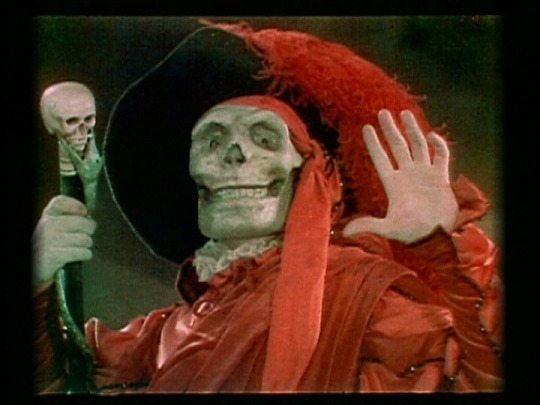
Universal’s Soundstage 28 was an integral part of the VIP tour at Universal Studios Hollywood for decades. Though the orchestra seats and the stage of the film’s Palais Garnier had long gone, the backside box seats of the auditorium remained. Stage 28 featured in numerous films after The Phantom of the Opera, including Dracula (1931), the Lon Chaney biopic Man of a Thousand Faces (1957), Psycho (1960), Charade (1963), Jurassic Park (1993), How the Grinch Stole Christmas (2000), and The Muppets (2011). The soundstage was also supposedly haunted, with individuals claiming to see a caped figure (Lon Chaney as the Phantom?) running around the catwalks, lights flickering on and off, and doors opening and closing on their own. In 2014, after standing for almost ninety years, Universal decided to demolish Stage 28 so as to expand its theme park. However, the historic set escaped the wrecking ball, as Universal decided to disassemble the set, place it into storage, and perhaps someday reassemble it. It is a fate far kinder than almost all other production design relics from the silent era.
Unlike what was coming out of Weimar Germany in the 1920s in the form of German Expressionism, American horror films had no template to follow when The Phantom of the Opera arrived in theaters. There would be no codification of American horror cinema’s tropes and sense of timing until the next decade. But without 1925’s The Phantom of the Opera, Universal would never become the house of horror it did in the 1930s through the early ‘50s (including the Dracula, Frankenstein, Mummy, Invisible Man, Wolf Man, and Creature from the Black Lagoon series). So, unbound by any unwritten guidelines, 1925’s The Phantom of the Opera – a horror film, but arguably also a melodrama with elements of horror – consumes the viewer with its chilling atmosphere and, from Lon Chaney, one of the best cinematic performances ever, without any qualification. For silent film novices, this is one of the best films to begin with (outside the comedies of Charlie Chaplin, Buster Keaton, and Harold Lloyd). Regardless of one’s familiarity with silent film, The Phantom of the Opera is a cinematic milestone.
My rating: 9.5/10
^ Based on my personal imdb rating. My interpretation of that ratings system can be found in the “Ratings system” page on my blog. Half-points are always rounded down.
For more of my reviews tagged “My Movie Odyssey”, check out the tag of the same name on my blog.
This is the twenty-third Movie Odyssey Retrospective. Movie Odyssey Retrospectives are reviews on films I had seen in their entirety before this blog’s creation or films I failed to give a full-length write-up to following the blog’s creation. Previous Retrospectives include Dracula (1931 English-language version), Oliver! (1968), and Peter Pan (1953).
#The Phantom of the Opera#Rupert Julian#Lon Chaney#Mary Philbin#Norman Kerry#Carl Laemmle#Gaston Leroux#Ernst Laemmle#Edward Sedgwick#Arthur Edmund Carewe#Gibson Gowland#Snitz Edwards#Virginia Pearson#Edward Curtiss#Maurice Pivar#Gilmore Walker#Lois Weber#silent film#TCM#My Movie Odyssey
6 notes
·
View notes
Text
100 livres à avoir lu dans sa vie (entre autres):
1984, George Orwell ✅
A la croisée des mondes, Philip Pullman
Agnès Grey, Agnès Bronte ✅
Alice au Pays des merveilles, Lewis Carroll ✅
Angélique marquise des anges, Anne Golon
Anna Karenine, Léon Tolstoï
A Rebours, Joris-Karl Huysmans
Au bonheur des dames, Émile Zola
Avec vue sur l'Arno, E.M Forster
Autant en emporte le vent, Margaret Mitchell
Barry Lyndon, William Makepeace Thackeray
Belle du Seigneur, Albert Cohen
Blonde, Joyce Carol Oates
Bonjour tristesse, Françoise Sagan ✅
Cent ans de solitude, Gabriel Garcia Marquez
Charlie et la chocolaterie, Roald Dahl ✅
Chéri, Colette
Crime et Châtiment, Féodor Dostoïevski
De grandes espérances, Charles Dickens
Des fleurs pour Algernon, Daniel Keyes
Des souris et des hommes, John Steinbeck ✅
Dix petits nègres, Agatha Christie ✅
Docteur Jekyll et Mister Hyde, Robert Louis Stevenson ✅
Don Quichotte, Miguel Cervantés
Dracula, Bram Stocker ✅
Du côté de chez Swann, Marcel Proust
Dune, Frank Herbert ✅
Fahrenheit 451, Ray Bradbury ✅
Fondation, Isaac Asimov
Frankenstein, Mary Shelley ✅
Gatsby le magnifique, Francis Scott Fitzgerald ✅
Harry Potter à l'école des sorciers, J.K Rowling
Home, Toni Morrison
Jane Eyre, Charlotte Bronte
Kafka sur le rivage, Haruki Murakami
L'adieu aux armes, Ernest Hemingway ✅
L'affaire Jane Eyre, Jasper Fforde
L'appel de la forêt, Jack London ✅
L'attrape-cœur, J. D. Salinger ✅
L'écume des jours, Boris Vian
L'étranger, Albert Camus ✅
L'insoutenable légèreté de l'être, Milan Kundera
La condition humaine, André Malraux
La dame aux camélias, Alexandre Dumas Fils
La dame en blanc, Wilkie Collins
La gloire de mon père, Marcel Pagnol
La ligne verte, Stephen King ✅
La nuit des temps, René Barjavel
La Princesse de Clèves, Mme de La Fayette ✅
La Route, Cormac McCarthy ✅
Le chien des Baskerville, Arthur Conan Doyle
Le cœur cousu, Carole Martinez
Le comte de Monte-Cristo, Alexandre Dumas : tome 1 et 2
Le dernier jour d'un condamné, Victor Hugo ✅
Le fantôme de l'opéra, Gaston Leroux
Le lièvre de Vaatanen, Arto Paasilinna
Le maître et Marguerite, Mikhaïl Boulgakov
Le meilleur des mondes, Aldous Huxley
Le nom de la rose, Umberto Eco
Le parfum, Patrick Süskind
Le portrait de Dorian Gray, Oscar Wilde ✅
Le Petit Prince, Antoine de Saint-Exupery ✅
Le père Goriot, Honoré de Balzac ✅
Le prophète, Khalil Gibran ✅
Le rapport de Brodeck, Philippe Claudel
Le rouge et le noir, Stendhal ✅
Le Seigneur des anneaux, J.R Tolkien ✅
Le temps de l'innocence, Edith Wharton
Le vieux qui lisait des romans d'amour, Luis Sepulveda ✅
Les Chroniques de Narnia, CS Lewis
Les Hauts de Hurle-Vent, Emily Brontë
Les liaisons dangereuses, Choderlos de Laclos ✅
Les Malaussène, Daniel Pennac ✅
Les mémoires d'une jeune fille rangée, Simone de
Beauvoir
Les mystères d'Udolfo, Ann Radcliff
Les piliers de la Terre, Ken Follett : tome 1
Les quatre filles du Docteur March, Louisa May
Alcott
Les racines du ciel, Romain Gary
Lettre d'une inconnue, Stefan Zweig ✅
Madame Bovary, Gustave Flaubert ✅
Millenium, Larson Stieg ✅
Miss Charity, Marie-Aude Murail
Mrs Dalloway, Virginia Woolf
Ne tirez pas sur l'oiseau moqueur, Harper Lee ✅
Nord et Sud, Elisabeth Gaskell
Orgueil et Préjugés, Jane Austen
Pastorale américaine, Philip Roth
Peter Pan, James Matthew Barrie
Pilgrim, Timothy Findley
Rebecca, Daphne Du Maurier
Robinson Crusoé, Daniel Defoe ✅
Rouge Brésil, Jean Christophe Ruffin
Sa majesté des mouches, William Goldwin ✅
Tess d'Uberville, Thomas Hardy
Tous les matins du monde, Pascal Quignard
Un roi sans divertissement, Jean Giono
Une prière pour Owen, John Irving
Une Vie, Guy de Maupassant
Vent d'est, vent d'ouest, Pearl Buck
Voyage au bout de la nuit, Louis-Ferdinand Céline ✅
Total : 37/100
26 notes
·
View notes
Text

via julie uhrman on ig
#christen press#simone charley#ali riley#syd leroux#mac pluck#jasmyne spencer#sarah gorden#madison hammond#angelina anderson#acfc
50 notes
·
View notes